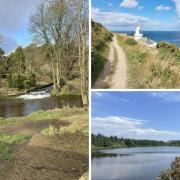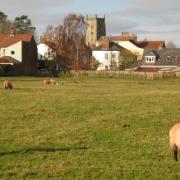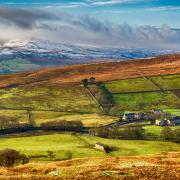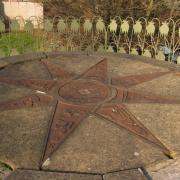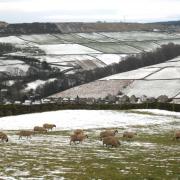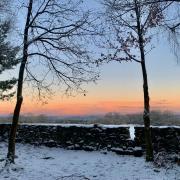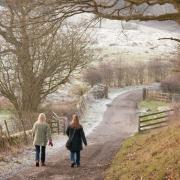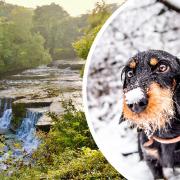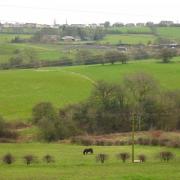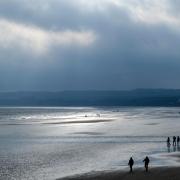Follow a route with dramatic views and an adventurous past. Terry Fletcher is your guide
Flamborough Head thrusts a solid bony knuckle into the North Sea and has been an important part of the Yorkshire coastline for thousands of years. The headland has been settled since the Stone Age and pre-historic men turned it into a massive fortress, creating the huge mysterious ditch and earth rampart of Danes Dyke which cuts for two and half miles from coast to coast and protects five square miles of land with its back to the sea.
Archaeologists are divided over when it was built but all agree that, despite its name, it had nothing to do with the Vikings and that it must have been a colossal undertaking by desperate men in an era when everything was done by muscle power and sweat.
Unfortunately, though it is well worth a visit, it is not possible to legally walk the length of the dyke so this walk starts from the former fishing village of Flamborough itself and tiptoes along some of Yorkshire’s most spectacular coastline where the ever-hungry sea has gnawed caves and coves, chasms and canyons into the chalk.Directions
Although it lies between the popular holiday resorts of Filey and Bridlington Flamborough stands aloof from the main coast road and retains a semi-rural atmosphere. Start at the roundabout by the Post Office in the centre of the village where there is a reminder of the constant dangers of this coast in the shape of a pair of memorial to crews of local fishing cobles lost at sea.
Head northwards up Chapel Street until the junction with Craikewells. There, go through a gate in the wooden fence, signposted Path to North Cliff. This curls round behind the houses before striking away northwards along a hedge side towards a sprawling and less-than-picturesque caravan park. The path crosses fields until it arrives abruptly at the clifftop. Away to the left are the towering vertical chalk cliffs of Bempton, high-rise home to millions of nesting seabirds each spring. Our way, however, lies southwards so turn right along the broad grassy top with the twin lighthouses of Flamborough prominent ahead.
At first there is little hint of the drama below but soon the chalk cliffs and caves of Thornwick Bay appear. They are riddled with caves and cracks which testify to the eroding power of the waves. Eventually the path reaches North Landing, where generations of fishermen have launched their cobles and where Flamborough’s lifeboat used to be stationed. These days the rescue boat is kept at South Landing on the other side of the headland.
The path leads easily onwards to the tip of the headland where the lighthouse stands guard keeping ships from the dangerous rocks 170ft below. Some believe that earlier beacons gave Flamborough its name – place of the flame – but others argue it comes from the Saxon word flaen, meaning an arrowhead or dart and describes the headland’s shape.
A little further inland is the old octagonal tower It was built in 1674 as a privately-owned lighthouse but might equally be described as a folly. It was the idea of Sir John Clayton who planned to charge passing ships for its services. Quite how he planned to collect these tolls is unclear as he went bust before it was completed. It is not even certain the tower was ever used for its intended purpose but it remains the oldest surviving lighthouse in England.
The headland also has a place in American history. At the Battle of Flamborough Head in 1779 John Paul Jones, the father of the US navy, took on the British. His flagship, the Bonnehomme Richard was sunk from under him but in best Hollywood fashion he captured two enemy vessels and sailed away in them. American-funded attempts to find and raise the wreck are still going on.
From the lighthouse the path continues with steep cliffs below and flat fields behind until it reaches the wooden ravine of the South Landing.
Here, if time permits, it’s possible to take a diversion along a circular sculpture trail through the woods. From the South Landing press on for a few minutes until the path reaches a three armed signpost. Turn right following the sign to Flamborough. Where the path enters the village weave your way through the cottages towards the tower of the church.
Turn rightwards along the main road as it curls leftwards into Tower Street, passing the war memorial, to reach the roundabout in the centre of the village where we started.
Compass points
Start/Finish: Centre of Flamborough village.
Length: 8 miles. Time: Allow 4-5 hours.
Map: OS Explorer 301 Scarborough and Bridlington.
Terrain: Clifftop paths and field. Negligible height gain but take care on cliff paths.
Refreshments: Pubs and caf�s in Flamborough. Seasonal caf�s at North and South Landing and the head itself.
Tip. Take binoculars to watch the seabirds.
A user video on Youtube of Flamborough Head, to add your photos of the area click the red button below



